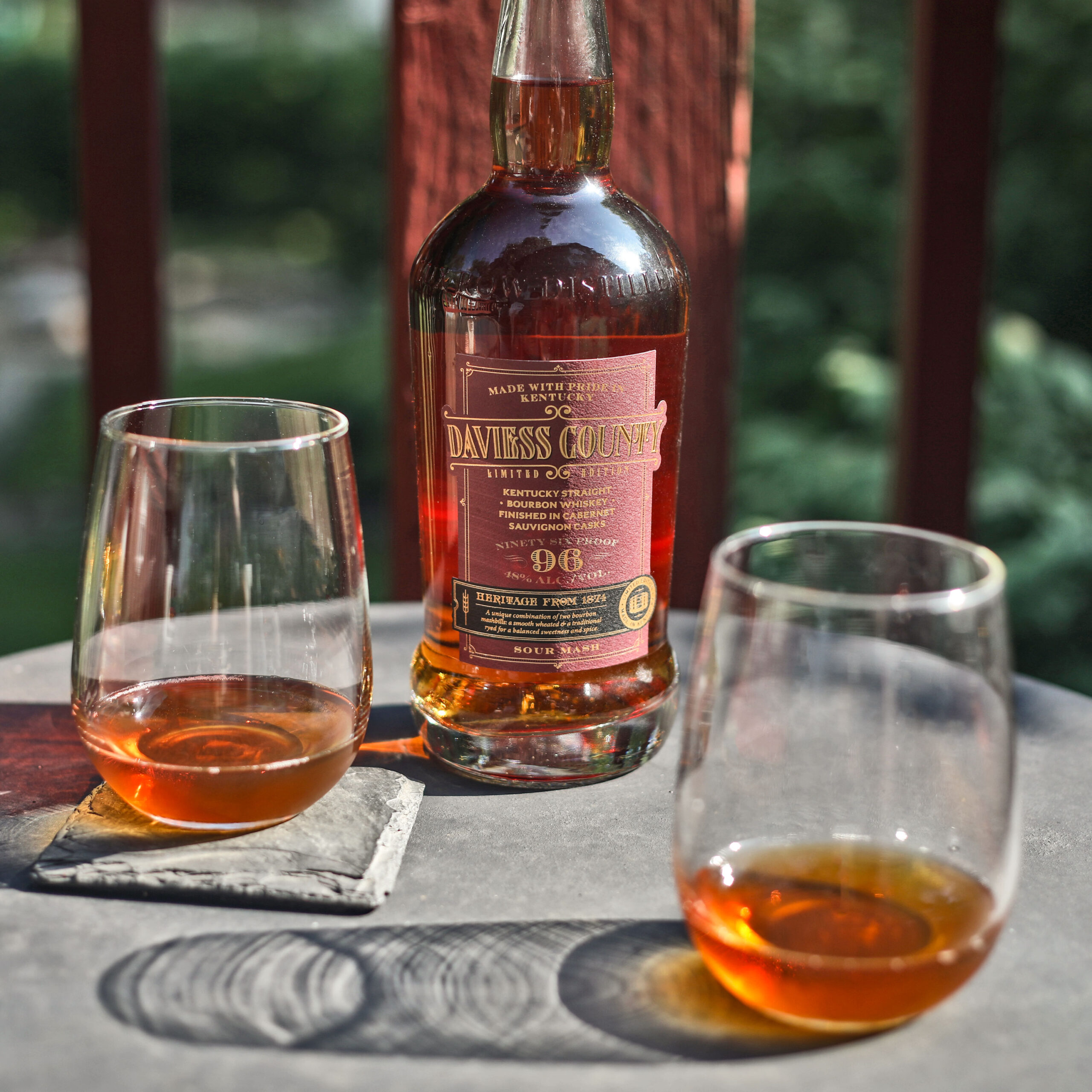
There’s a lot to love about drinking wine. From appreciating the different varietals, vintages, and tasting notes to learning about how things like barrels, terroir, and aging impact what’s in the bottle, it’s easy to become an enthusiast. However, if you consider yourself a wine drinker, you might be surprised to learn that a lot of what you love about wine also exists within the worlds of whiskey and bourbon.
Whether you’re eager to expand your drinking repertoire or you just need some inspiration to branch out from your usual, thinking about whiskey through the lens of wine is a great way to make imbibing enjoyable and educational.
Embrace the Differences
Although whiskey and wine share many similarities (such as being heavily affected by the barrels in which they’re aged), there’s no denying that these two libations are also highly different. The best way to transition from drinking wine to developing an appreciation for whiskey is to embrace the following differences:
- Proof: Whiskey has a significantly higher proof and ABV (alcohol by volume) than wine, which is another way to say it’s a lot stronger. While most wine comes in at around 12-15% ABV, most whiskey is about 40% (although some bottles, like Ezra 99, come in higher at 49.5%). If you prefer a beverage with less burn, you can always add ice or water to your next dram to help it go down a little smoother.
- Flavor: Most whiskeys feature notes of caramel, vanilla, oak, and spice, while most wines tend to lean toward the fruitier side of the flavor spectrum. That being said, some red wines do feature the flavors found in whiskey, so if you’re a fan of wines like Cabernet Sauvignon, you might notice some similarities as you explore. There are even bottles of whiskey that are finished in wine barrels, like Daviess County Cabernet Sauvignon Finish.
- Barreling: Both wine and whiskey are aged in barrels. However, wine can be aged in barrels made from various materials, while whiskey is subject to specific regulations. For example, bourbons must be aged in charred, new American oak barrels. On the other hand, plenty of wines are aged in stainless steel barrels.
Do Your Research
Wine lovers tend to be well-versed in enology. Reading, discussing, and tasting different styles of wine is standard practice — and this explorative mindset can easily be transferred to encompass whiskey and bourbon. If you love drinking wine in theory and practice, doing some whiskey-related research is an excellent way to discover a few new favorites.
Whether you want to pick up a few whiskey books, conduct an at-home whiskey tasting, or get a behind-the-scenes look into how whiskey is made by booking a distillery tour, there are plenty of ways to start learning. Plus, at the end of the day, the best way to learn about whiskey is by drinking it (which, if you ask us, never feels like homework).
Sniff, Sip, and Savor
When you’re ready to enjoy a nice glass of wine, you already know that there are a few key steps you need to take to appreciate the nuances in your glass. You can approach a glass of whiskey just like you would a nice glass of wine — by sniffing, sipping, and savoring. Take a look:
- Sniff: Taking a moment to notice the aromas in whiskey will help you appreciate and enjoy the delicate notes that the distiller took care to impart into the spirit. Scent contributes significantly to your perception of flavor, so sniffing before you sip is crucial. When sniffing, keep your mouth partially open to get a fuller whiff of those notes. This allows you to taste the notes on your tongue without taking a sip.
- Sip: While there’s a time and place for throwing back a straight shot of whiskey, if you’re enjoying a quality dram like Blood Oath, slow sipping is undoubtedly the way to go.
- Savor: If you’re a serious wine drinker, you might already be familiar with the concept of keeping a wine journal. Writing down the flavors, aromas, and textures you experience in both wines and whiskies can help you understand the bottles you’re drawn towards — and make selecting bottles easier.
Experiment with Whiskey Pairing
There are plenty of foods that just taste better when they’re paired with the right glass of wine, and vice versa. The same thing rings true when it comes to whiskey. Just like a glass of crisp, dry white wine goes great with seafood, the spice-forward David Nicholson Reserve pairs perfectly with barbeque or smoked meat.
To get started, you can approach whiskey pairing just like you’d approach wine pairing. This means considering the dominant flavors in your glass and choosing foods that will complement rather than clash with those notes. You don’t want your beverage to overwhelm what’s on your plate, so choose lighter whiskies for lighter foods and heavier whiskies for meals that can stand up to bold flavors.
Explore the World of Whiskey with Lux Row
We hope by now you’re excited about using your love of wine as a starting point for discovering whiskey. Lux Row Distillers proudly offers a range of whiskies that are perfect for wine and whiskey lovers alike. From our defiantly smooth Rebel Bourbon to the legendary Ezra Brooks, there’s something for everyone here at Lux Row Distillers.
Pick up a few bottles today and embark on your delicious journey toward becoming a whiskey drinker!

